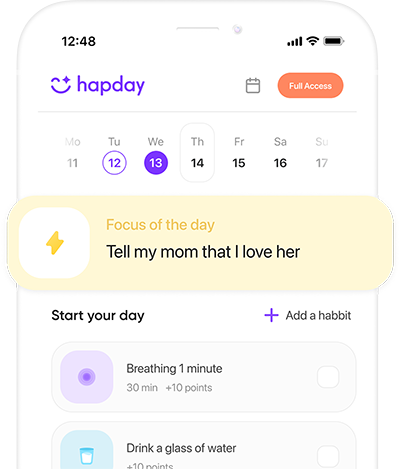Table of Contents
- What is PTSD? A Quick Look
- The Scope of PTSD
- Why Personalized Treatment Matters
- Proven Therapies
- Steps to Designing Your Personalized Recovery Plan
- Overcoming Hurdles
- Conclusion
What is PTSD? A Quick Look
Before you begin crafting your recovery plan, it’s essential to understand what PTSD is. According to the Diagnostic and Statistical Manual of Mental Disorders (DSM-5), PTSD is classified as a trauma- and stressor-related disorder. Common symptoms include flashbacks, nightmares, avoidance of trauma reminders, changes in thoughts and mood, and heightened arousal or reactivity. Understanding these elements will help in tailoring the most effective recovery path for you.
The Scope of PTSD
PTSD is more common than many realize, affecting about 6% of people at some point in their lives. It tends to be more prevalent among women (8%) compared to men (4%). The condition can disrupt various aspects of life, from relationships to work, underscoring the importance of addressing it for a better quality of life.
Why Personalized Treatment Matters
PTSD manifests differently in everyone, influenced by factors such as the nature of the trauma and individual background. Thus, a one-size-fits-all approach can fall short. Crafting a personalized plan means ensuring that treatment aligns with your specific needs and preferences, which can greatly enhance the healing process.
Proven Therapies
Several therapies have proven effective against PTSD. For example, Cognitive Behavioral Therapy (CBT), particularly its Trauma-Focused version (TF-CBT), frequently makes a significant difference. Research shows that TF-CBT substantially reduces PTSD symptoms. Eye Movement Desensitization and Reprocessing (EMDR) is another therapy that leverages external stimuli to help process distressing memories. Medications, such as SSRIs, can also help manage symptoms, especially when combined with therapy.
Steps to Designing Your Personalized Recovery Plan
The journey toward healing involves taking strategic, thoughtful steps in collaboration with mental health professionals. Here’s how to shape your own recovery roadmap.
1. Conduct a Comprehensive Assessment
Begin with a deep dive into understanding your PTSD. This involves professional assessments to gauge the severity of your symptoms and any co-occurring mental health issues. Expect clinical interviews and possibly standardized tools like the Clinician-Administered PTSD Scale (CAPS) to provide detailed insights.
2. Set Meaningful Goals
Recovery is a marathon, not a sprint. Setting clear, achievable goals is crucial for sustaining motivation. Use the SMART framework: Specific, Measurable, Attainable, Relevant, and Time-bound. Whether it’s reducing nightmares or increasing social interactions, clarity in goals can guide your progress.
3. Choose the Right Therapies
Armed with assessment insights, collaborate with your healthcare provider to select therapies that resonate with you. This could mean a mix of Trauma-Focused CBT, EMDR, medication, and perhaps group therapy for added peer support.
4. Include Holistic Methods
Complement traditional therapies with holistic practices to enhance overall well-being. Mindfulness and meditation can offer significant relief, yoga can improve body awareness, and art or music therapy can unlock new pathways to processing trauma.
5. Build a Support Network
A sturdy support system is an anchor in your recovery. Educate friends and family about PTSD so they can better support you. Engage in support groups to connect with others who share similar experiences, reducing feelings of isolation.
6. Develop Coping Mechanisms
Equip yourself with coping strategies to handle day-to-day challenges. Techniques like grounding exercises, journaling, and regular physical activity can be invaluable tools in managing stress and boosting mood.
7. Monitor and Adjust Your Plan
Track your progress and be ready to adapt your approach. This might mean trying new therapies, adjusting medications, or setting fresh goals—flexibility is key to finding what works best for you.
Overcoming Hurdles
Even with a solid plan, challenges such as stigma, limited access to care, and co-occurring disorders can arise. Addressing these issues through education, teletherapy options, and comprehensive treatment plans is essential.
Conclusion
Creating a personalized action plan for PTSD recovery is a dynamic process requiring collaboration, self-awareness, and persistence. By focusing on individualized care and combining evidence-based treatments with supportive strategies, the path to a brighter, trauma-free future becomes more tangible.
Empowering yourself with the right tools and support enables not just symptom relief but a journey toward rediscovering a fulfilling life. With patience, commitment, and resilience, you can chart your own path to healing and reclaim your future.
—
References
- American Psychiatric Association. (2013). Diagnostic and Statistical Manual of Mental Disorders (5th ed.). Arlington, VA.
- Polusny, M. A., et al. (2015). Mindfulness-Based Stress Reduction for PTSD: A Randomized Clinical Trial. JAMA.
- Rosenbaum, S., et al. (2015). Physical Activity in PTSD Treatment: A Review. Journal of Clinical Psychiatry.
- Sloan, D. M., et al. (2013). Group Treatment for Veterans with PTSD. Journal of Traumatic Stress.
- Stein, M. B., et al. (2006). SSRIs in PTSD Treatment: Effects and Benefits. Journal of Clinical Psychiatry.
- U.S. Department of Veterans Affairs. (2020). PTSD Prevalence in Adults. National Center for PTSD.
- van der Kolk, B. A. (2014). The Body Keeps the Score: Trauma and Healing. Viking.
- Watts, B. V., et al. (2013). Efficacy of PTSD Treatments: A Meta-Analysis. Journal of Clinical Psychiatry.
- Weathers, F. W., et al. (2018). The CAPS for DSM-5. National Center for PTSD.


I really appreciate how this article breaks down the steps for creating a personalized PTSD recovery plan. It makes it feel more approachable and less overwhelming. The focus on individual needs is so crucial! It’s comforting to know that there are various therapies and holistic methods available. Can’t wait to start applying some of these tips!
Absolutely! Personalization is key, and I love that they included holistic methods too. Have you tried any specific therapies yet?
While I found this article informative, I have to say that not everyone has access to these resources. It’s frustrating when you’re trying to craft a plan but find barriers like cost or location. More awareness about affordable options would be helpful!
Totally agree! It’s tough when you’re ready to heal but hit those roadblocks. Maybe we need more community support programs!
“Crafting Your Path” emphasizes a vital approach for those dealing with PTSD. The breakdown of proven therapies like CBT and EMDR provides a clear direction on where to start. Understanding the importance of setting meaningful goals was also a highlight for me—it’s essential for maintaining motivation during recovery.
“Steps to Designing Your Personalized Recovery Plan” feels like a roadmap out of the fog! I love how it emphasizes building a support network—it’s something often overlooked but so crucial in healing from trauma.
“Building connections with others can really make a difference! Have you found any particular groups or communities helpful?”
“It’s nice that they highlight holistic practices too! Mindfulness has helped me tremendously in managing my symptoms.”
“The idea of combining traditional therapies with holistic methods resonated with me deeply—art therapy has been incredibly liberating in my own journey, allowing me to express feelings I couldn’t put into words before.”
This article had some valuable insights but felt quite dense at times—maybe breaking down the steps even further could make it easier for someone just starting out? It’s great info, though!
I can see your point; simplifying complex ideas can really help newcomers feel less intimidated by the process.
Understanding PTSD is half the battle, right? This guide lays it all out well; however, I wish there was more emphasis on real-life stories or testimonials from survivors—it could really inspire hope for others going through similar experiences!
Seriously loved how practical this guide is about creating your own path! Monitoring your progress feels like a game-changer—like leveling up in life instead of just surviving each day.
This game analogy resonates with me! Every little achievement counts as progress—we should celebrate those wins!
Totally agree! It’s amazing how much change happens step-by-step.
This article provides a very comprehensive overview of PTSD. I appreciate how it emphasizes the importance of personalized treatment. It’s crucial for individuals to understand that recovery is not a one-size-fits-all process. The steps outlined for designing a recovery plan are practical and insightful. Thank you for shedding light on such an important topic.
I find this article to be overly optimistic about PTSD treatment options. While personalization is key, the reality is that many people don’t have access to these resources. Not everyone can afford therapy or medications, and merely outlining steps without addressing these barriers feels disingenuous.
This post effectively summarizes the complexities of PTSD and the various treatment methodologies available today. I particularly liked the section on holistic methods, as it broadens the scope of healing beyond just traditional therapies. It would be interesting to see more examples of how these holistic methods can be integrated into standard treatment plans.
While I appreciate the effort to personalize PTSD treatments, there are countless studies showing that many therapies do not yield significant results for everyone. It’s great in theory, but in practice, how effective are these therapies really? One must wonder if we’re setting unrealistic expectations for those suffering from PTSD.
“Overcoming Hurdles” sounds like a motivational book title! If only dealing with PTSD were as easy as flipping through self-help pages! Who knew mindfulness could cure all? Just do yoga and meditate away your trauma! Sounds like a plan—if only life were that simple!
“Recovery is a marathon, not a sprint.” Well said! But who actually runs marathons? I think most people would prefer a nice leisurely stroll through healing instead of hitting mile markers every week! Thanks for providing some structure; maybe we can take our time without racing against ourselves.
“The Body Keeps the Score” by van der Kolk is an excellent resource mentioned here! It’s fascinating how trauma affects our physical health too. I would love to see more interdisciplinary approaches combining psychology with physiological treatments in future articles on PTSD recovery.
The statistics presented about PTSD prevalence are alarming yet necessary for awareness. It was surprising to learn about the disparity between genders regarding this condition; however, what’s even more shocking is that so few know how common it really is. This article does well in bringing attention to such an under-discussed issue.
I completely agree with you! Raising awareness is so important because so many still stigmatize mental health issues like PTSD. The more we talk about it openly, the better support we can offer those affected.